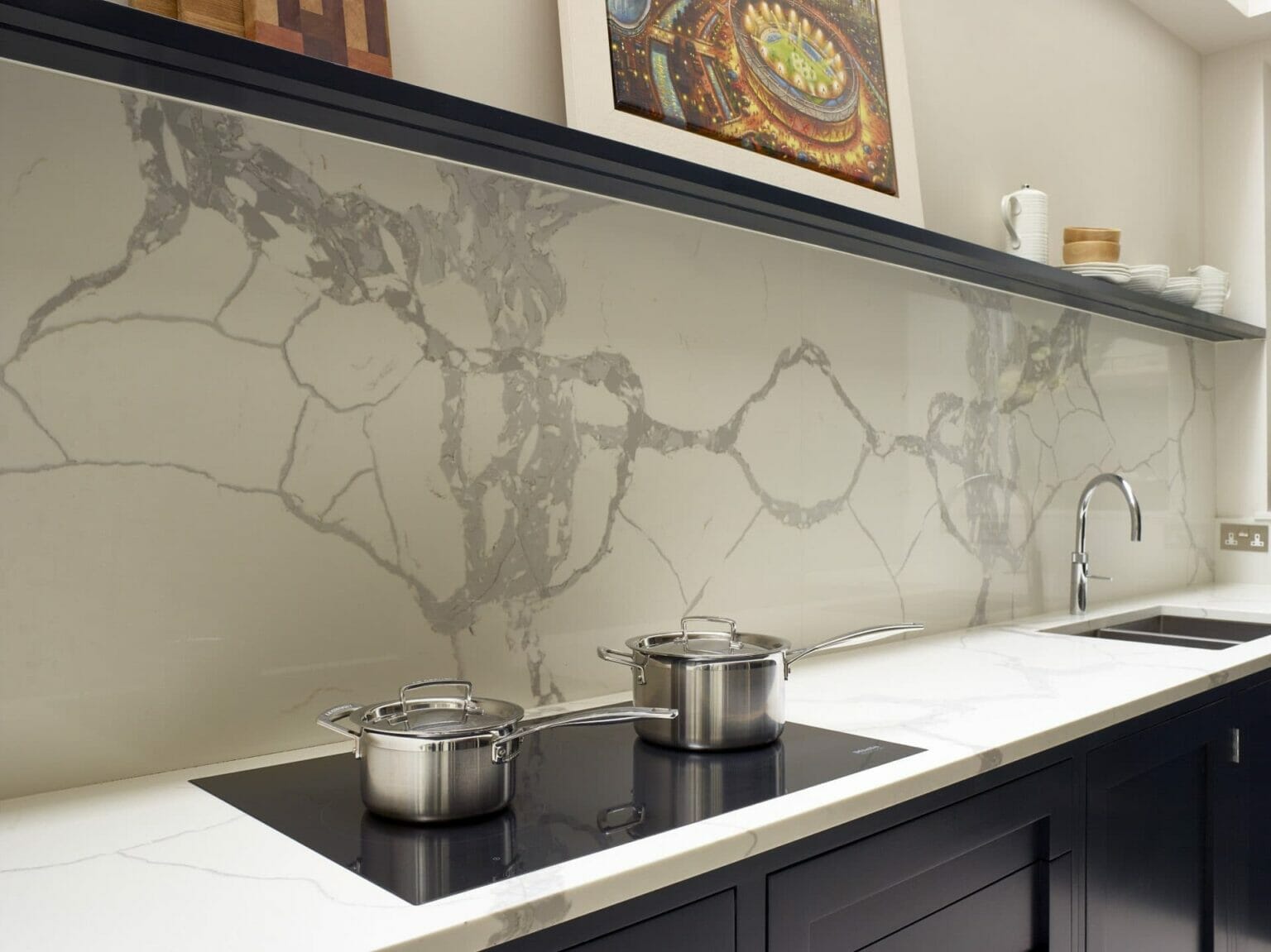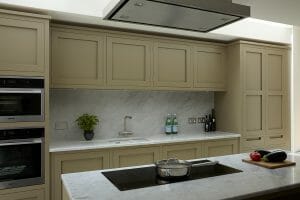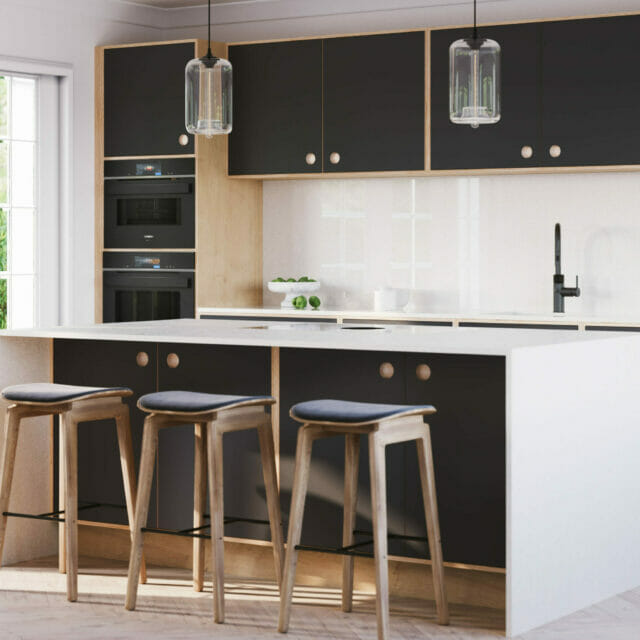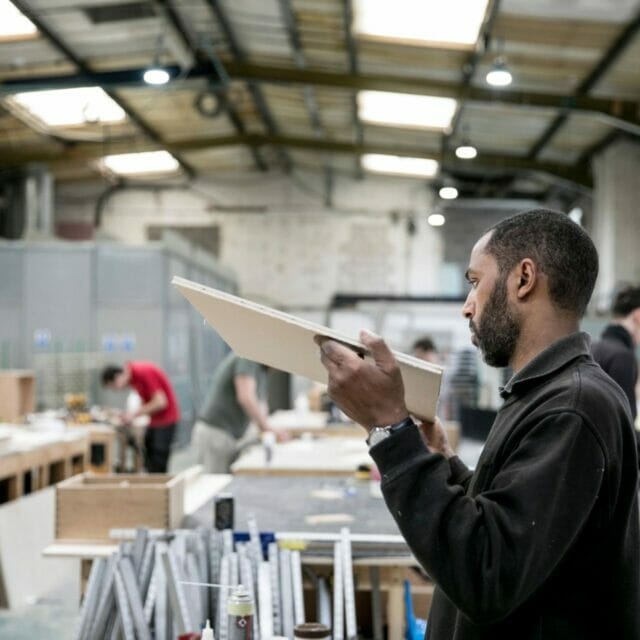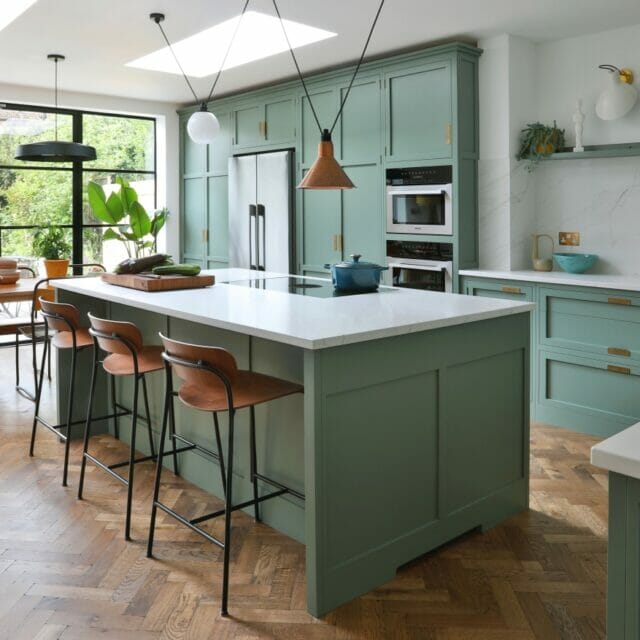For a sleek and streamlined look
Many of our clients specify an induction hob, which provides speedy cooking and sleek looks. An induction hob blends virtually seamlessly into the work surface, maintaining a streamlined and elegant look.
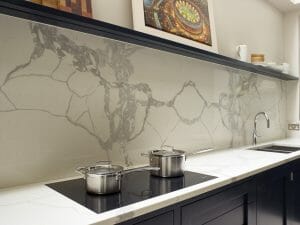
We’re often asked to explain how an induction hob works – if one of our clients has never used one before it sounds a little magical and mysterious, so we are always eager to dispel the mystery and myths and extol the virtues of clean, energy-aware cooking.
In a nutshell, an induction hob heats a pan using electrical induction, rather than thermal conduction, which originates from a flame, such as a gas hob, or an electrical heating element, where the element itself heats up and transfers the heat to the pan. Pans used on an induction hob must contain, or be wholly made from, a magnetic metal, for example stainless steel or cast iron. However, aluminium and copper pans can be used if they have an extra steel layer on the base. If a magnet sticks to the bottom of your existing pans, they can be used on an induction hob. Virtually every pan in the shops or online will be labelled suitable (or not) for use with an induction hob.
So … an induction hob looks very much like a standard ‘ceramic’ hob, and will be split into zones. Once switched on, the chosen zone will heat up a ferrous pan via an electric current which passes through a copper wire beneath the hob surface. An oscillating magnetic field is the result, producing an electrical current in the pot which heats up, therefore heating the contents. So there’s the science bit … and the result is even cooking with no hot-spots in the pans, very little wasted heat as it’s only the pan that heats up, and speedy heating up and cooling down times. Induction hobs stay clean too, as any spills on to the surface can be easily wiped away – they won’t get burnt on. Induction hob zones are growing in size and flexibility. Miele even have a full surface hob which allows you to put pans wherever you want on the surface.
The advantages of induction hob cooking are numerous; from a designer’s point of view an induction hob has a minimalistic appearance, it won’t intrude too much, and extends the clean, crisp appearance of uncluttered work surfaces. From a safety point of view, such a hob is a good choice for any family with inquisitive youngsters around. Some models such as (the TwistPad Fire by Neff) have a magnetic control knob which can be moved away from the hob and stored out of reach when not in use. In general surface area of the hob doesn’t get very hot at all (apart from the areas directly beneath the pan) and the temperature control is very precise.
Some induction hobs are designed to be flush mounted into the worktop which looks very sleek but is more costly to fit and can be difficult to replace in case of failure. A more common installation method it to overmount them over the worktop so the hob has a small lip over the worktop and is slightly proud of the worktop.

